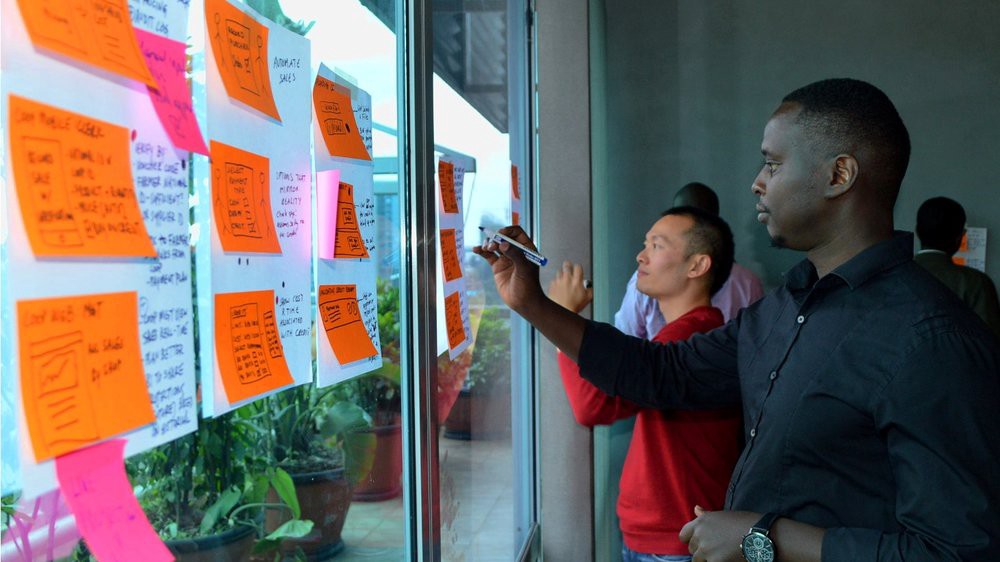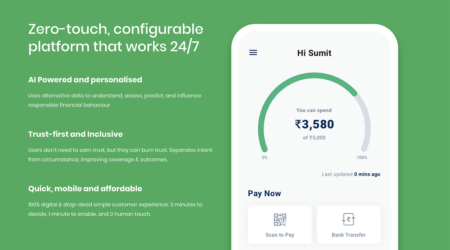Three Powerful Tools for Fintech Practitioners
Since we launched the Catalyst Fund in 2015, we have helped 15 fintech entrepreneurs deploy novel approaches to bring products and services to their customers. We have distilled the successful patterns and behaviors we have observed into toolkits and posts for those considering fintech methods for their businesses, whether they be startups or established players. Below we share three powerful tools for fintech practitioners.
At a high level, successful fintech startups adopt principles of Design, Risk Management and Product Management, and also put modern technologies like smartphones, artificial intelligence and cloud computing at the core of their value propositions. At successful fintech startups Designers, Product Managers, CEOs and Engineers reinforce each other in multidisciplinary teams to explore the overlap between what customers find desirable, what engineers can build, and what the business requires to grow.
Design
The function of Design is to represent the voice of the customer at all times to make sure a company stays centered on what matters most. Design is not a one-off process. In the spirit of customer validation, designers keep tight feedback loops with customers throughout the product development process, from early prototypes to usability testing of new features.
Through user research (UX) techniques like online surveys and one-one-one interviews, designers invest heavily during initial stages in order to know their customers like the back of their hand; what are their problems and pain points, and how can their company help? In fact, designers segment customers into personas to allow the team to constantly keep in mind different user profiles and needs.
Aesthetics matter. Designers work hard to perfect a product’s UI and its look and feel, so it can live up to the high expectations created by WhatsApp or Google. But great design goes beyond just user research and visuals during early product design stages. Successful inclusive fintech startups map out the Customer Journey and Service Blueprint in detail to fully understand the perspective of the user each time they interact with the company.
Ultimately, great design creates trust, that elusive quality that all startups are chasing and that distinguishes them from their competitors. We’ve captured our lessons for startups to build trust with their customers through their products or services in our Design for Trust Toolkit.

Product Management
But designers can’t work in isolation; they need someone to lead the orchestra — and that’s where a product manager comes in. The PM takes a big picture view and works to ensure that designers, engineers and marketers all work towards the same goal. Crucially, she makes sure the product or service goal is backed by data and evidence. She keeps the whole process nimble through quick agile iterations focused on the activities of users, from initial onboarding to the retention phase. For example, using A/B Testing and usage analytics she captures details of how each users is interacting with every screen to inform engagement.
The effective product manager is very focused on the key metrics for the business, such as customer lifetime value or acquisition costs. She also works hard to explore the best channels to find new customers, including viral referrals and social media. As an example, our portfolio company Destacame has seen lead acquisition costs dropping to less than $3 through these types of digital channels. We explore some of the different tools and frameworks to help startups focus as they chart their journey from idea, to minimum viable product (MVP) and growth in our upcoming product/market fit toolkit.
Modern Technologies
And finally, you can’t have good fintech without the “tech” that is enabling these new approaches.
Most important are the smartphones, which run fintech apps and also act as channels to find and interact with users. For instance, several of our startups use WhatsApp to offer customer support and drive virality, communicating with users in the way they prefer. Smartphones can also be used to generate and capture user data, which is particularly valuable when targeting low-income consumers who traditionally have been anonymous. In that vein, our portfolio company Smile Identity validates and authenticates customer identities using selfies taken on their phones.
In addition machine learning and other artificial intelligence systems can improve customer value propositions and to automate internal processes like credit scoring using data from smartphones and other new sources like satellites. As an example, our portfolio company ToGarantido is exploring chatbots for sales of their insurance policies and customer support. Harvesting is using satellite data to understand credit and insurance risk with just a GPS read. Worldcover doesn’t even need customers to file a claim as their satellite systems award them automatically.
And software engineering helped Escala and Paygo Energy to automate most of their back-office processes to be responsive to their customers. It is easier and more affordable than ever for startups to leverage affordable SaaS solutions to architect their systems. Likewise, cloud computing is also a powerful technology that offers simplicity, lower costs and flexibility. There is no need to commit capital to purchase hardware and the team requires less engineering talent to keep the servers going.
Conclusion
In our experience, companies that harness the powerful combination of design, product management and modern technologies create better and more tailored value propositions. That makes for happier customers, which is what makes businesses thrive. By driving more usage, the fintech triad can create more impact in low-income populations. And digital channels and automated processes can significantly lower costs of serving customers, allowing for expansion to new markets and reducing exclusion.
Originally published from Aspen Network of Development Entrepreneurs on January 17, 2018.


![[Press release] Four Ghanaian digital companies receive funding and acceleration support through the Catalyst Fund Inclusive Digital Commerce Accelerator program](https://bfaglobal.com/wp-content/uploads/2021/10/Customer-of-OZE-450x250.jpeg)